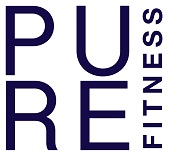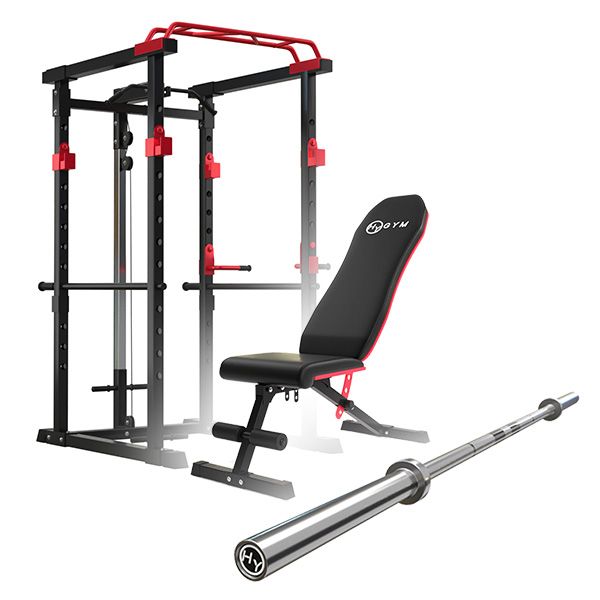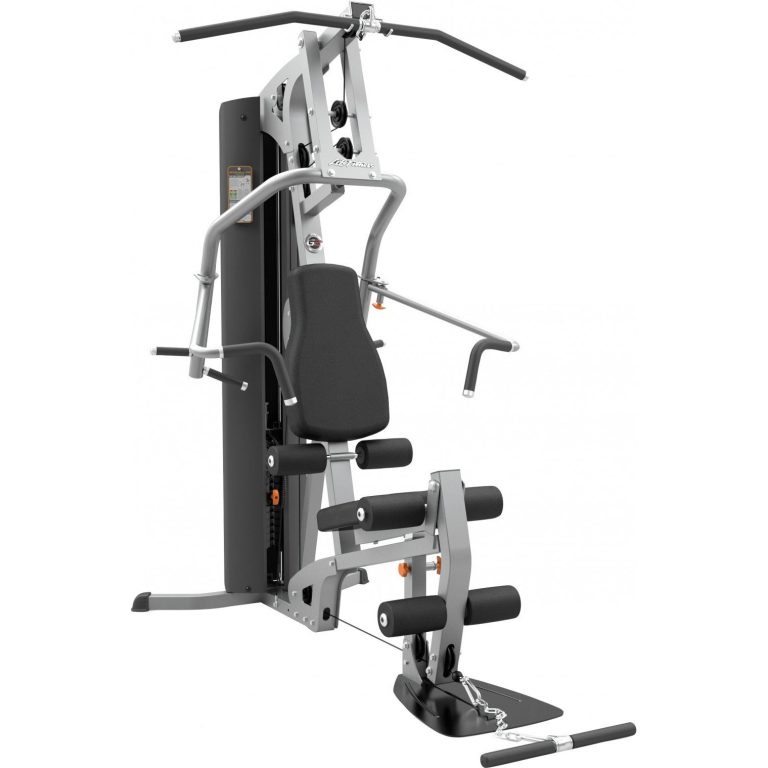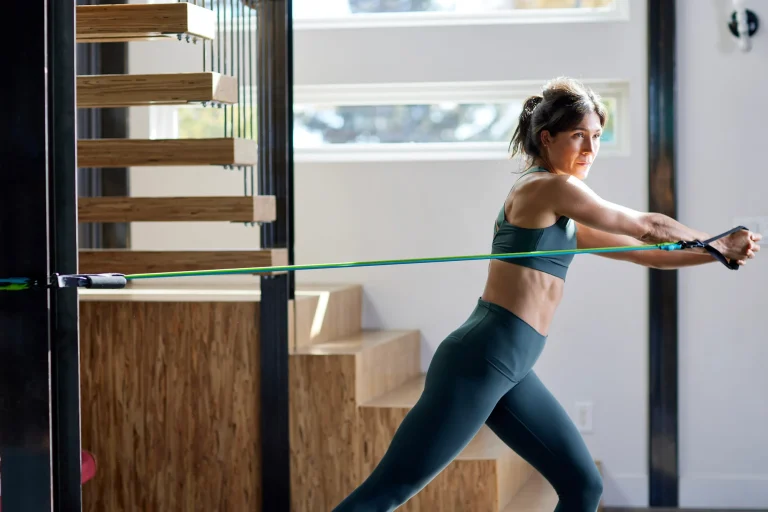In today’s fitness world, you may often hear the term “squat rack” being thrown around, but what exactly is it? A squat rack is a piece of exercise equipment designed to assist you in performing squats safely and effectively. By providing a sturdy frame to hold the barbell and adjustable safety bars to catch the weight if needed, a squat rack ensures proper form and minimizes the risk of injury. Whether you’re a seasoned lifter or a beginner just stepping into the gym, understanding the importance of a squat rack is crucial for a successful and rewarding workout routine. A squat rack is a piece of exercise equipment that is widely used in gyms and fitness centers around the world. It is designed to provide a safe and stable platform for performing various weightlifting exercises, particularly squats. The squat rack is an essential tool for anyone looking to build strength, develop their lower body muscles, improve their overall fitness, or enhance their athletic performance.
Table of Contents
ToggleDefinition of a Squat Rack
A squat rack, also known as a power rack or a squat cage, is a sturdy metal frame that consists of four upright posts and two horizontal barbell catches. The main purpose of the squat rack is to hold a barbell at a suitable height and provide safety features such as adjustable safety pins or spotter arms. This allows individuals to perform squats and other exercises without the need for a spotter.
Purpose of a Squat Rack
The primary purpose of a squat rack is to facilitate the performance of squats, which are considered one of the most effective compound exercises for strength training and muscle development. However, squat racks can also be used for a variety of other exercises such as bench presses, shoulder presses, barbell lunges, and bent-over rows. The versatility of the squat rack makes it a valuable tool for individuals who are looking to target multiple muscle groups and achieve a full-body workout.
Features of a Squat Rack
Squat racks come with a range of features that enhance their functionality and usability. One of the key features is the adjustable safety pins or spotter arms, which allow users to set the desired height for the barbell and provide a safety mechanism in case of failure or fatigue during a lift. Additionally, many squat racks offer adjustable J-Hooks or barbell catches, which allow users to position the barbell at their desired height for different exercises.
Another notable feature of some squat racks is the inclusion of pull-up bars or dip bars, which further expands the range of exercises that can be performed using the rack. Some squat racks also have built-in weight plate storage pegs, providing a convenient and organized storage solution for additional weights.
Types of Squat Racks
There are several types of squat racks available in the market, each catering to different preferences and requirements. One common type is the stand-alone squat rack, which is a freestanding structure that does not require any attachment to walls or floors. Stand-alone squat racks are highly versatile and can be moved around easily, making them suitable for both home and commercial use.
Another type is the wall-mounted squat rack, which is affixed to a wall using brackets. Wall-mounted racks are compact and save space, making them ideal for smaller workout areas. They offer stability and security during exercises but may have limitations in terms of weight capacity compared to stand-alone racks.
Benefits of Using a Squat Rack
Using a squat rack offers numerous benefits for individuals of all fitness levels. Firstly, the squat rack provides a safe and controlled environment for performing heavy lifts such as squats, reducing the risk of injury. The adjustable safety pins or spotter arms allow individuals to push their limits without worrying about getting trapped under the barbell.
Secondly, using a squat rack promotes proper form and technique. The rack ensures that the barbell is positioned at the correct height, allowing individuals to maintain a neutral spine and perform the exercise with optimal alignment. This helps in targeting the correct muscle groups and avoiding unnecessary strain or injury.
Furthermore, squat racks offer versatility and flexibility in workout routines. With the ability to adjust the height of the barbell and perform various exercises, individuals can target different muscle groups, increase strength, and improve overall fitness. Squat racks also allow for progressive overload, as individuals can gradually increase the weight over time to challenge their muscles and continue making progress.
Difference Between Squat Rack and Power Rack
Although the terms “squat rack” and “power rack” are often used interchangeably, there are some key differences between the two. While both provide a secure platform for performing exercises, a power rack typically offers more features and functionality than a squat rack.
A power rack usually consists of four upright posts, just like a squat rack, but it has additional safety features such as adjustable safety pins at multiple heights, horizontal barbell catches, and sometimes, built-in pulley systems for cable exercises. These features make the power rack more versatile for a wider range of exercises and allow for greater customization of workouts.
On the other hand, a squat rack generally has simpler construction and focuses primarily on providing a stable platform for squat exercises. It may have adjustable safety pins or spotter arms for added safety, but the additional features found in a power rack may be absent.
Both the squat rack and power rack have their advantages, and the choice between the two ultimately depends on individual preferences, fitness goals, and available space.
How to Use a Squat Rack Safely
Using a squat rack safely is crucial to prevent accidents and injuries. Here are some guidelines to follow:
- Adjust the safety pins or spotter arms: Before starting any exercise, ensure that the safety pins or spotter arms are set at the appropriate height to catch the barbell if you fail to complete a rep. The pins should be slightly below your lowest point in the squat or exercise movement.
- Warm-up properly: Always warm-up your body before using the squat rack to prevent muscle strains or injuries. Perform dynamic stretches and light cardio exercises to increase blood circulation and loosen up your muscles.
- Use proper technique: Focus on maintaining proper form and technique throughout the exercise. Keep your feet shoulder-width apart, brace your core, and lower your body by bending your knees and hips, keeping your back straight. Push through your heels to raise the barbell and avoid using excessive momentum.
- Start with lighter weights: When starting with the squat rack, begin with lighter weights to practice proper form and build strength gradually. Slowly increase the weight as your muscles adapt and become stronger.
- Use a spotter if necessary: If you are attempting heavy lifts or pushing your limits, it is advisable to have a spotter present. A spotter can quickly take action if you struggle to complete a repetition and provide assistance if needed.
Popular Brands of Squat Racks
When it comes to buying a squat rack, there are several reputable and popular brands that offer high-quality options. Some of the leading brands in the market include Rogue Fitness, Titan Fitness, Rep Fitness, Valor Fitness, and CAP Barbell. These brands are known for their durable construction, innovative designs, and attention to safety features.
It is essential to research and read customer reviews to find a squat rack that best suits your specific needs, budget, and preferences. Consider factors such as weight capacity, stability, adjustability, and additional features to make an informed decision.
Considerations When Buying a Squat Rack
Before purchasing a squat rack, there are several factors to consider to ensure you choose the right one for your needs:
- Space availability: Measure the available space in your home or gym to determine the size and type of squat rack that will fit comfortably. Consider whether a stand-alone rack or a wall-mounted rack would be more suitable.
- Weight capacity: Check the weight capacity of the squat rack to ensure it can handle the maximum weight you intend to lift. It is recommended to choose a rack with a higher weight capacity than your current strength level to allow for progression.
- Adjustability: Look for a squat rack with adjustable features such as safety pins, spotter arms, and barbell catches. This will allow you to customize the rack to your desired height and accommodate different exercises.
- Stability and durability: Opt for a squat rack that is made of sturdy materials and has a stable base to ensure safety and longevity. Read reviews and check the construction quality to assess the durability of the rack.
- Additional features: Consider if you require any additional features such as pull-up bars, dip bars, or weight plate storage pegs. These features can enhance the versatility and functionality of the rack.
Squat Rack Exercises
The squat rack opens up a vast array of exercises that can be incorporated into your workout routine. Here are some common exercises:
- Barbell Squats: The primary exercise performed on a squat rack, barbell squats target the muscles of the lower body, including the quadriceps, hamstrings, glutes, and calves. Adjust the barbell height to your preferred position, grip the bar with hands slightly wider than shoulder-width apart, and perform a squatting motion by bending your knees and hips while keeping your back straight.
- Front Squats: Similar to barbell squats, front squats target the lower body muscles but place more emphasis on the quadriceps. Instead of positioning the barbell behind your neck, bring it to the front of your shoulders, crossing your arms to secure it. Perform the squatting motion while keeping an upright torso.
- Overhead Press: Adjust the barbell to a suitable height for overhead pressing. Stand facing the rack, grip the barbell with hands slightly wider than shoulder-width apart, and press the barbell overhead, extending your arms fully. This exercise targets the deltoids, triceps, and upper back muscles.
- Bench Press: Set the barbell catches at chest height for bench pressing. Lie down on a bench positioned inside the rack, aligning your eyes with the barbell. Grip the bar wider or narrower as per your comfort level, lower it to touch your chest, and press it back up. Bench press primarily targets the chest, shoulders, and triceps.
- Barbell Lunges: Adjust the barbell to a suitable height for lunges. Stand facing the rack, grip the barbell with hands slightly wider than shoulder-width apart, step forward with one leg, lower your body by bending both knees, and push back to the starting position. Lunges engage the quadriceps, hamstrings, glutes, and calves.
These are just a few examples of the exercises that can be performed using a squat rack. It is important to remember to start with lighter weights, focus on proper technique, and progress gradually to ensure safety and maximize the benefits of using a squat rack.







